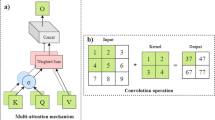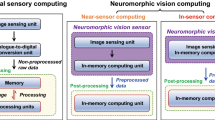Abstract.
A neural network mosaic model was developed to investigate the spatial-temporal properties of the human pupillary control system. It was based on the double-layer neural network model developed by Cannon and Robinson and the pupillary dual-path model developed by Sun and Stark. The neural network portion of the model received its input from a sensor array and consisted of a retina-like two-dimensional neuronal layer. The dual-path portion of the model was composed of interconnections of the neurons that formed a mosaic of AC transient and DC sustained paths. The spatial aggregates of the AC and DC signals were input to the AC and DC summing neurons, respectively. Finally, the weighted sum of the aggregate AC and DC signals provided the output for driving the pupillary response. An important property of the model was that it could adaptively learn from training samples by adjustment of the weights. The neural network mosaic model showed excellent performance in simulating both the traditional pupillary phenomena and the new spatial stimulation findings such as responses to change in stimulus pattern and shift of light spot. Moreover, the model could also be used for the diagnosis of clinical deficits and image processing in machine vision.
Similar content being viewed by others
Author information
Authors and Affiliations
Additional information
Received: 12 December 1997 / Accepted in revised form: 22 April 1998
Rights and permissions
About this article
Cite this article
Sun, W., Sun, F. & Hung, G. Neural network mosaic model for pupillary responses to spatial stimuli. Biol Cybern 79, 131–138 (1998). https://doi.org/10.1007/s004220050465
Issue Date:
DOI: https://doi.org/10.1007/s004220050465




